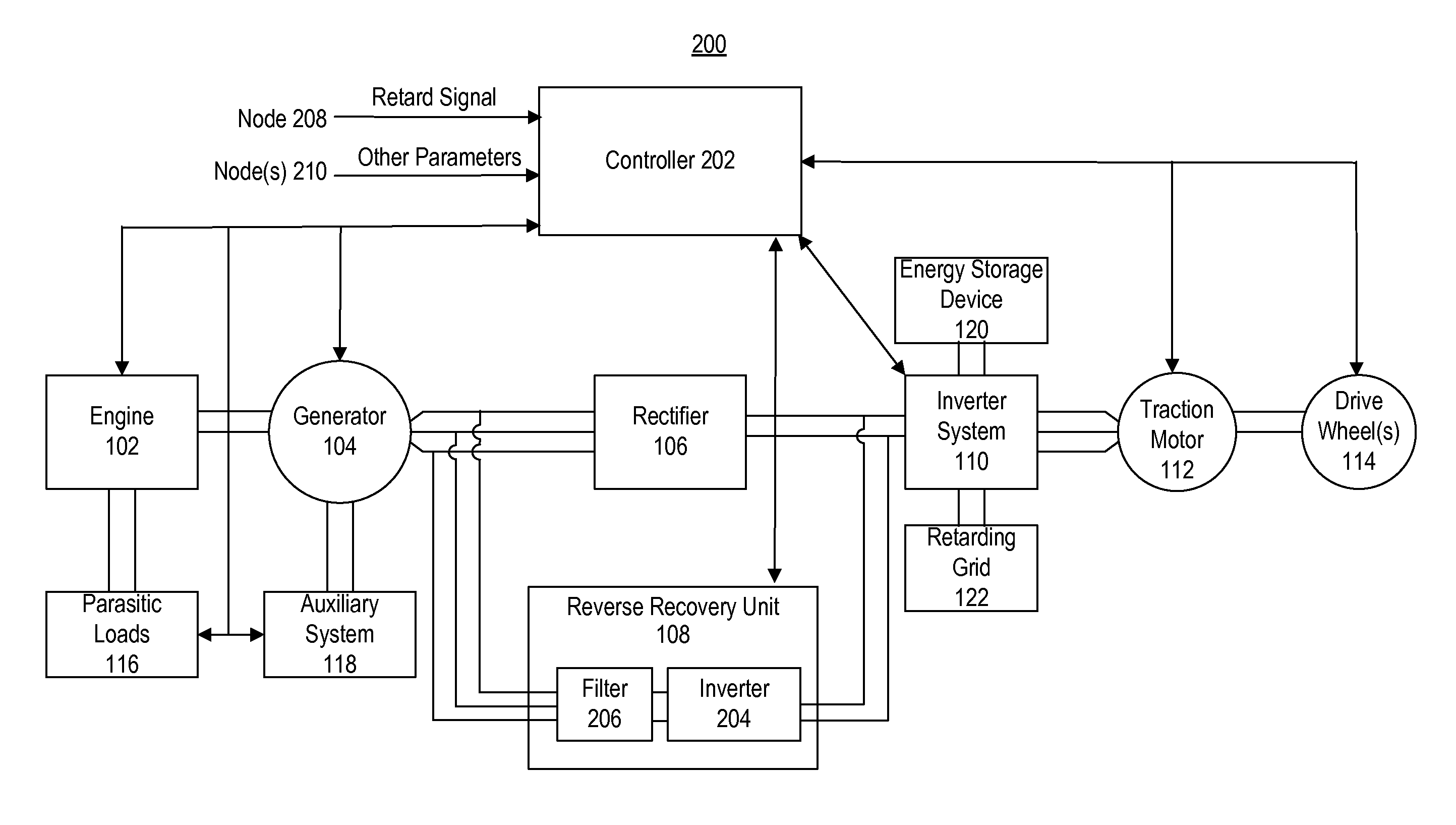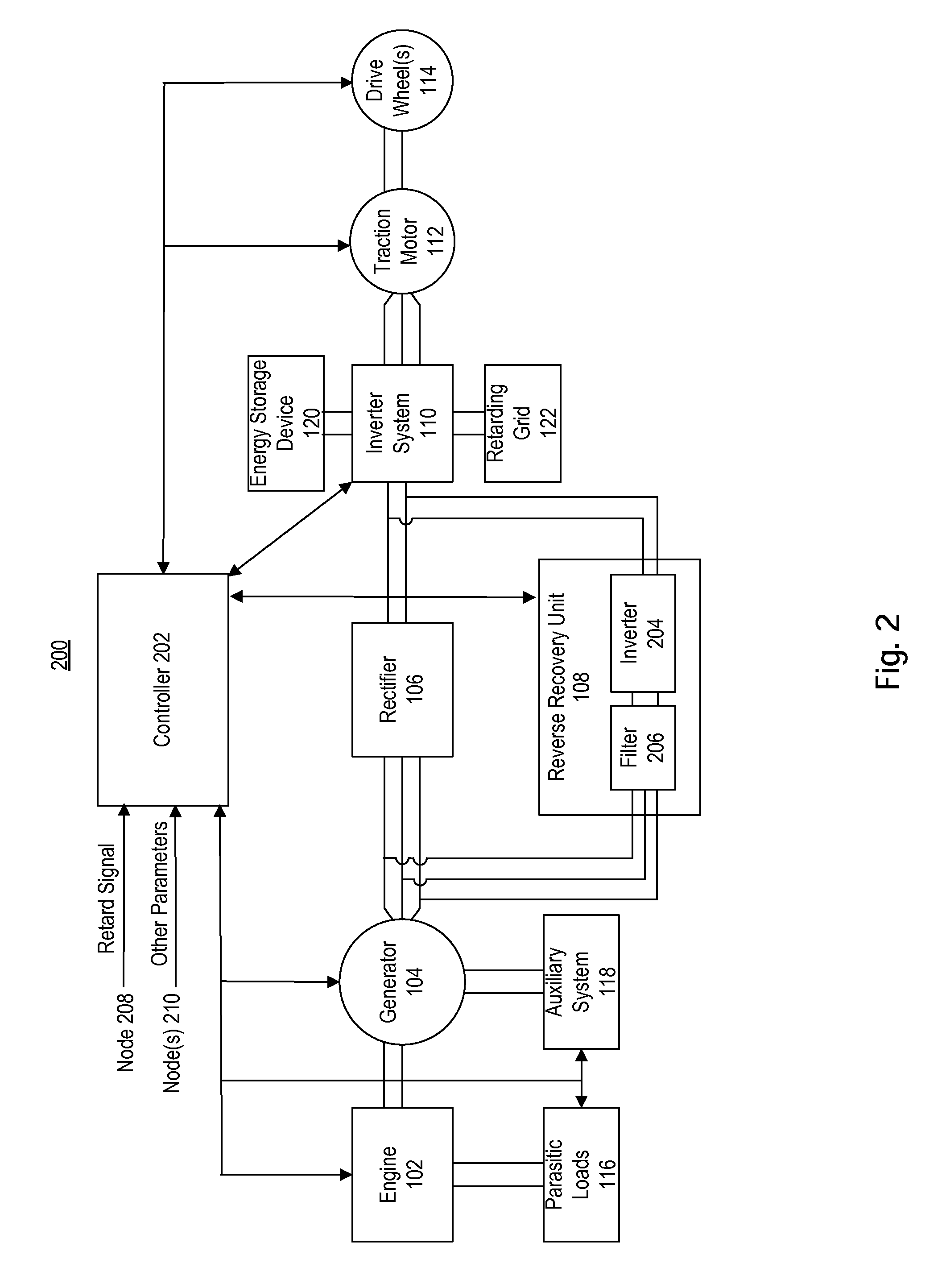Regenerative braking system for reducing fuel consumption
- Summary
- Abstract
- Description
- Claims
- Application Information
AI Technical Summary
Benefits of technology
Problems solved by technology
Method used
Image
Examples
Embodiment Construction
[0016]FIG. 1 schematically illustrates a mobile machine 100 including a regenerative braking system for reducing fuel consumption. The mobile machine 100 may include an engine 102, a generator 104, a rectifier 106, a reverse recovery unit 108, an inverter system 110, a traction motor 112, one or more drive wheels 114, parasitic loads 116, an auxiliary system 118, an energy storage device 120, a retarding grid 122.
[0017]Engine 102 may be an internal combustion engine and serve as the primary power source of machine 100. Engine 102 may be configured to provide direct or indirect power to parasitic loads 116 via belts, hydraulic systems, and the like. Engine 102 may also be mechanically coupled to generator 104 through a drivetrain that may include, for example, a crankshaft, a torque converter, a transmission, clutches, gears, and other drivetrain components. Generator 104 may be electrically connected to auxiliary system 118. Auxiliary system 118 may include one or more auxiliary dev...
PUM
 Login to view more
Login to view more Abstract
Description
Claims
Application Information
 Login to view more
Login to view more - R&D Engineer
- R&D Manager
- IP Professional
- Industry Leading Data Capabilities
- Powerful AI technology
- Patent DNA Extraction
Browse by: Latest US Patents, China's latest patents, Technical Efficacy Thesaurus, Application Domain, Technology Topic.
© 2024 PatSnap. All rights reserved.Legal|Privacy policy|Modern Slavery Act Transparency Statement|Sitemap



